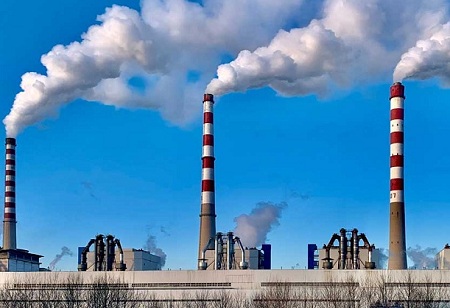The largest power producer in India, NTPC Ltd., has lofty goals for producing a bigger proportion of renewable energy while also intending to increase the power generation capabilities of eight of its coal-based power plants by more than 10 gigawatts (GW). An investment of between Rs 35,000 and 40,000 crore will be needed for this.
As stated by a person acquainted with the proposal, these brownfield expansions will take place at the power plants in Talcher (1,320 MW) and Darlipali (800 MW) in Odisha, Lara (1,600 MW) and Sipat (800 MW) in Chhattisgarh, Singrauli (1,600 MW) and Meja (1,320 MW) in Uttar Pradesh.
Two other plants are being built at various phases at Patratu in Jharkhand and Ramagundam in Telangana. Another official stated that they would add 2,400 MW and 800 MW, respectively, but noted that certain projects could take 8–10 years to complete due to delays in obtaining the necessary permissions and concerns voiced by various social groups. The nation has made a goal to lower its GDP's carbon intensity and achieve net-zero CO2 emissions by 2070.
According to some estimates, coal-fired power will be more expensive overall, including environmental expenses, than renewable energy. An extremely efficient coal-based thermal plant with a capacity of 1 MW costs around Rs 4 crore, while the capex for an equivalent solar unit costs between Rs 4-5 crore.
Construction contracts will be awarded for Lara, Singrauli, and Meja this fiscal year. Contracts for the expansion of the NTPC power plants at Talcher, Darlipali, and Sipat have already been awarded. The company's 71 GW of total capacity, which it expects to increase to 130 GW by 2032, allowed it to create 400 billion units of power in the most recent fiscal year. The thermal power stations account for 58,154 MW, or 81%, of the 71,594 MW total generation capacity.
The energy giant, which generates 25% of all the electricity used in India, has vowed to generate 50% of its energy from renewable sources by 2032. Approximately 23% of India's total energy production is currently made up of renewable sources. The largest coal consumer in the nation, NTPC, has been sluggish in increasing the generation capacity of its coal-based facilities during the past few years as a result of heightened attention from important stakeholders to environmental, social, and governance (ESG) considerations.
NTPC has pushed on to build capabilities and its sole concern is the supply of coal. This is despite the fact that developing renewable energy capacities will take time and especially in light of the panic situation faced last summer due to a major power crisis. According to Vikram V, vice president and sector head for corporate ratings at ICRA, until storage is cost-effective, renewable energy sources can only meet a percentage of the nation's demand for electricity, and the reliance on thermal power will persist. "Each year, the demand for power increases by 12 to 15 GW. Despite the addition of 15 GW of renewable energy capacity in FY23, we can only obtain 4-5 GW when taking into account the PLF levels of solar and wind. The remaining 7–10 GW must come from other sources, primarily thermal.
